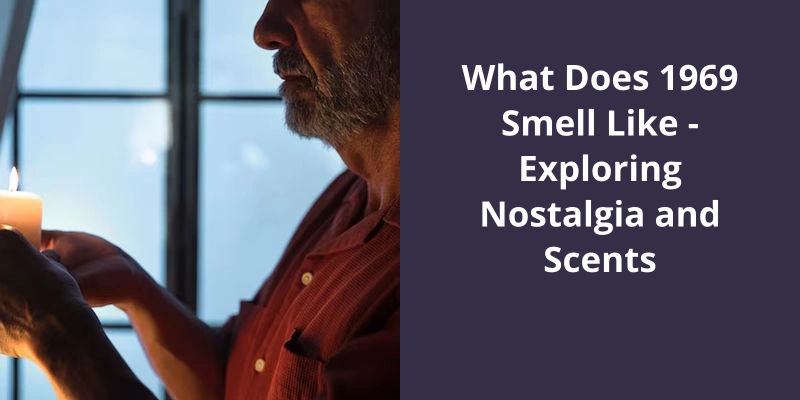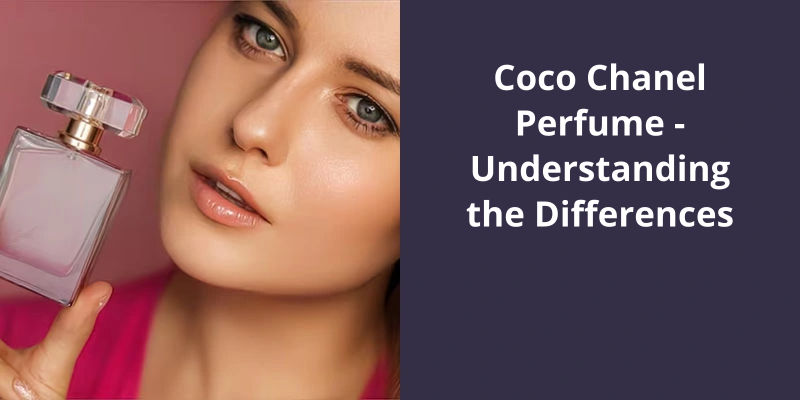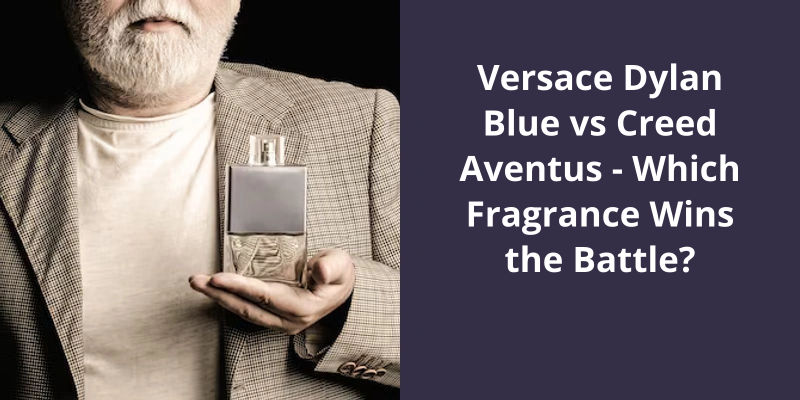"What Does 1969 Smell Like – Exploring Nostalgia and Scents" takes us on a sensory journey through time, inviting us to delve into the olfactory world of the past. Inspired by the provocative and seductive spirit of Serge Gainsbourg's iconic song, "69 années érotiques," the fragrance aptly named 1969 captures the essence of a bygone era. It’s a harmonious blend of spicy and floral notes, where the intoxicating aroma of roses and white flowers intertwines with the warm embrace of cardamom and clove. As the fragrance lingers on the skin, it unveils a captivating combination of patchouli, coffee, and white musk, evoking a sense of nostalgia and sensuality. With each inhale, we become enigmatic time travelers, transported to a time when passion, rebellion, and liberation permeated the air. What does 1969 smell like? It smells like a potent elixir that entwines the fragrant memories of the past with the desire to relive the intoxicating allure of a transformative era.

What Was the Smell of the 60s?
What Does 1969 Smell Like – Exploring Nostalgia and Scents
Take a whiff of the Sixties. What did the Sixties smell like? No, the answer isn’t “hippies.”. For those who grew up in the era, the decade was a bouquet of fresh grass, new plastic, Ipana toothpaste, orange sherbet, and meatloaf.
The smell of fresh grass evokes memories of sunny summer days spent lying in the park, the scent mingling with the laughter of children playing. It symbolizes the carefree spirit and sense of freedom that permeated the 60s. The green, earthy aroma was a reminder of the hippie movements connection to nature and their desire for a simpler, more natural way of life.
New plastic was another scent that defined the era. It represented the rapid advancements in technology and the consumer-driven society of the time. From the sleek design of vinyl records to the futuristic space-age gadgets, the smell of new plastic captured the excitement and optimism of the 60s.
Ipana toothpaste was a popular brand during the era and had a distinct minty-fresh scent. It was a reminder of the daily rituals and personal hygiene practices that were considered important during the time. The smell of Ipana toothpaste takes us back to mornings spent getting ready for school or work, the taste lingering in our mouths as we start the day.
Orange sherbet was a refreshing treat that was often enjoyed during the summer months. The scent of this citrusy dessert brings back memories of hot afternoons spent at the local ice cream parlor, cooling off with a scoop of orange sherbet. It was a taste of pure joy and indulgence, encapsulating the carefree spirit of the 60s.
Finally, the smell of meatloaf takes us back to family dinners and home-cooked meals. It was a staple of American cuisine during the time, symbolizing comfort, love, and togetherness. The nostalgic aroma of meatloaf brings back memories of gathering around the dinner table, sharing stories and laughter with loved ones.
The smell of the 60s was a mixture of fresh grass, new plastic, Ipana toothpaste, orange sherbet, and meatloaf. These scents evoke memories of a time filled with optimism, freedom, and a longing for a simpler way of life. They remind us of the taste, sounds, and experiences that defined the era, allowing us to revisit and cherish the nostalgia of the Sixties.
The air was thick with a mix of aromas, creating a sensory experience unlike any other. The scents of incense wafted through the air, mingling with the earthy smell of rain-soaked fields and the pungent odor of marijuana. Cigarette smoke filled the atmosphere, clashing with the sweet fragrance of patchouli oil, a staple among the hippie crowd. Bodies danced and swayed, emitting a musky scent of sweat and unwashed skin, while the sharp tang of cheap alcohol lingered on the breath of festival-goers. Woodstock was a sensory overload, a olfactory tapestry woven with a diverse range of smells that captured the essence of the era.
What Did Woodstock Smell Like?
The air was thick with the scent of freedom and rebellion, a mix of sweat and anticipation. It felt like a collision of energies, blending together to create an atmosphere that was both intoxicating and overwhelming. The fragrances that were popular at that time reflected the counterculture movement, with earthy and musky scents taking center stage.
Patchouli, a staple in the hippie subculture, permeated the air with it’s distinctive aroma. It was the scent of hippie communes and bohemian living, capturing the essence of the free-spirited generation. Alongside patchouli, the smell of cigarettes and weed was prevalent, as people indulged in their vices freely. The smoky haze hung in the air, intertwining with the earthy notes of patchouli.
As the music blared and bodies moved in unison, the scent of damp soil mingled with the crowds perspiration. It was the smell of people coming together, losing themselves in the music and the moment. The mingling of bodily odors, amplified by the lack of personal hygiene, added to the distinct aroma of Woodstock.
In terms of fragrances, the 1960s was a time of experimentation and individuality. Many turned away from conventional perfumes and embraced natural and herbal scents. Sandalwood, bergamot, and lavender were popular choices, as their calming and soothing properties resonated with the spirit of peace and love.
The Influence of the Natural and Herbal Scent Trend in the 1960s on Modern Fragrance Preferences
The natural and herbal scent trend that emerged in the 1960s had a significant impact on modern fragrance preferences. During this period, there was a growing interest in returning to nature and embracing a more holistic lifestyle. People began to gravitate towards scents that were reminiscent of the outdoors, such as fresh flowers, grass, herbs, and spices.
This trend continues to influence fragrance choices today, as many people still appreciate the earthy and natural aromas that were popularized in the 1960s. Modern perfumes often incorporate elements of botanicals, green notes, and herbal ingredients to evoke a sense of nostalgia and connection to nature.
By exploring scents inspired by the 1960s, individuals can tap into the nostalgia associated with that era, creating a multi-sensory experience that transports them back in time. The enduring appeal of this trend highlights the timeless nature of the scents that originated in 1969 and their ability to evoke feelings of warmth, tranquility, and a connection to the natural world.
The 1960s was an era filled with iconic sights and sounds, but not much attention has been given to the scents that defined the decade. Amidst the hustle and bustle of social change and cultural revolution, certain smells became synonymous with the era. Evocative aromas like musk oil, patchouli, and sandalwood wafted through the air, leaving a lasting olfactory imprint on the memories of those who experienced that transformative time.
What Were the Smells of the 60s?
The 1960s was a decade of cultural revolution and social change. It was a time when the youth rebelled against established norms and embraced a new sense of freedom. While much has been written and explored about the fashion, music, and social movements of the era, there’s one aspect that remains relatively unexplored—its smells.
One can’t talk about the 60s without mentioning the distinctive scent of musk oil. It was a popular fragrance that exuded sensuality and earthiness, perfectly capturing the essence of the hippie movement. Musk oil was often associated with sexual liberation and the exploration of ones individuality. It’s warm and musky aroma became a symbol of the era, creating a sensory experience that transported individuals back to the free-spirited days of the 60s.
Another scent that defined the 60s was patchouli. This earthy and aromatic oil became synonymous with the counterculture movement. It was often used in incense and personal care products, leaving behind a lingering aroma that epitomized peace, love, and unity. Patchouli was a fragrance that evoked a sense of rebellion against mainstream society, capturing the zeitgeist of the era.
Sandalwood also played a significant role in the olfactory landscape of the 60s. Known for it’s warm and woody scent, sandalwood was often used in perfumes and scented oils. It’s intoxicating aroma was seen as a connection to nature and spirituality, a reminder of peaceful and meditative states of mind. The scent of sandalwood added an air of mysticism and tranquility to the 60s, providing individuals with a sense of escape from the tumultuous times.
Alongside these notable scents, there were also various fragrances associated with specific events and places in the 60s. The smell of marijuana smoke was in the air at countless music festivals and demonstrations, becoming an emblem of the countercultural movement and a symbol of protest against the establishment. The distinct scent of burning incense wafted through the air in psychedelic clubs, creating an immersive atmosphere where people could lose themselves in the music and dance.
Exploring nostalgia and scents of the 60s brings to mind moments of rebellion, peace, and cultural shifts. These scents remind us of a time when change was in the air, and the world seemed on the brink of transformation. The fragrances of musk oil, patchouli, and sandalwood capture the essence of that transformative period, evoking the spirit of the era and transporting us to a time of youthful liberation and exploration.
The 1970s was a decade filled with distinct smells, from the musky fragrances of popular colognes like Jovan, Old Spice, and English Leather, to the nostalgic scents of shampoos such as Gee, Your Hair Smells Terrific, Lemon Up, and Body on Tap. Other smells that defined the era included the unmistakable aroma of fondue, the pungent odor of leaded gasoline, the leathery scent of Naugahyde furniture, and the nostalgic whiff of Super Elastic Bubble Plastic.
What Smells Like the 70s?
In the turbulent and culturally vibrant decade of the 1970s, scents played an integral role in defining the eras distinctive character and triggering nostalgic remembrances. One of the most pervasive smells reminiscent of the 70s is musk. Whether it was the pungent notes of Jovan, Old Spice, or the timeless aroma of English Leather, this musky fragrance encapsulated the essence of the decade.
Another scent that evokes vivid memories of the 1970s is the tantalizing aroma of Gee, Your Hair Smells Terrific shampoo. This iconic product not only had an unforgettable name but also left behind a lingering scent that many associate with the era. Alongside this classic shampoo, scents like Lemon Up and Body on Tap were popular choices for hair care, leaving a refreshing and citrusy fragrance in their wake.
Moving beyond personal care products, the aroma of fondue wafting through the air immediately transports many back to 1970s gatherings. The smell of melted cheese and the sizzle of meat being cooked at the table evoke memories of communal dining experiences and laid-back socializing. Another scent that characterized the era was the unmistakable smell of leaded gasoline, which filled the air at busy intersections and gas stations.
Naugahyde, a synthetic leather-like material, had a distinctive smell that lingered in homes across the country during the 1970s. The scent, a combination of vinyl and chemicals, was often associated with the eras furniture and was a common feature in many living rooms. Additionally, the whiff of Super Elastic Bubble Plastic, a popular toy, brings back memories of childhood playtime and the sweet aroma of the plastic bubbles created.
These scents, among others, form a olfactory tapestry of the 1970s, capturing the essence of the decades fashion, culture, and societal changes. With just a whiff of musk, memories of disco dancing, bell-bottom pants, and iconic hairstyles come rushing back, transporting us to a time of groovy tunes and cultural revolutions. So next time you catch a nostalgic scent from the 1970s, let it transport you to an era defined by it’s distinct aroma and unforgettable experiences.
Conclusion
Exploring nostalgia and scents is a delightful journey that takes us back in time, allowing us to relive and experience moments long gone. With it’s spicy and floral notes, 1969 enchants our senses with a captivating bouquet of roses and white flowers, intensified by the presence of cardamom and clove. It’s harmonious composition not only takes us on a nostalgic journey but also awakens our senses, reminding us of the timeless power of scent to encapsulate the spirit of a particular era. 1969 is a testament to the enduring allure of the past, and through it’s evocative aroma, invites us to celebrate and cherish the memories that define us.





